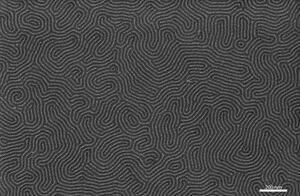Main Page: Difference between revisions
(created some test links) |
No edit summary |
||
| (4 intermediate revisions by the same user not shown) | |||
| Line 1: | Line 1: | ||
'''Welcome to the Brar Lab!''' |
|||
<strong>MediaWiki has been installed.</strong> |
|||
[[File:Graphene Ribbons.jpg|thumb]] |
|||
Consult the [https://www.mediawiki.org/wiki/Special:MyLanguage/Help:Contents User's Guide] for information on using the wiki software. |
|||
We probe the electronic, magnetic, and optical behavior of materials at the atomic-scale in search of new phenomena that have both fundamental and technological importance. |
|||
----Joel testing things out. This section can be removed later. |
|||
[[test page 1]] |
|||
Examples of such effects include highly localized plasmonic modes, long-range magnetic interactions, and deep impurity states. The types of behavior we search for are general and manifest in many types of systems, but they often occur most dramatically in exotic materials that exhibit quantum effects and in low dimensional materials with strong electron interactions. When new behavior is discovered locally, we use large-scale lithographic methods to structure the host material, such that those phenomena can manifest macroscopically in ways that can be utilized for new device applications. |
|||
For more information, please see our [https://brarlab.physics.wisc.edu/ website]or contact Victor Brar at vbrar@wisc.edu |
|||
----'''<u>Lab Resources</u>''' |
|||
[[NFC Equipment]] |
|||
== Getting started == |
== Getting started == |
||
Latest revision as of 19:59, 4 October 2021
Welcome to the Brar Lab!
We probe the electronic, magnetic, and optical behavior of materials at the atomic-scale in search of new phenomena that have both fundamental and technological importance.
Examples of such effects include highly localized plasmonic modes, long-range magnetic interactions, and deep impurity states. The types of behavior we search for are general and manifest in many types of systems, but they often occur most dramatically in exotic materials that exhibit quantum effects and in low dimensional materials with strong electron interactions. When new behavior is discovered locally, we use large-scale lithographic methods to structure the host material, such that those phenomena can manifest macroscopically in ways that can be utilized for new device applications.
For more information, please see our websiteor contact Victor Brar at vbrar@wisc.edu
Lab Resources
